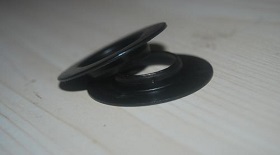Other reasons for breaking of valve spring
Transmission Exhibition will open. Let us learn about valve spring.
1. The center line of the spring is skewed. If the two ends of the valve spring are not perpendicular to the center line of the spring, the spring will work at high speed for a long time, and the metal material will easily break due to fatigue. Valve spring verticality check method is: first the spring is placed vertically on the plate, with a right-angle ruler against the bottom of the spring, and then the spring is rotated around, measuring the maximum distance between the top spring and the right-angle ruler. Usually, the distance between valve springs and vertical lines is 1 ~ 1.5mm. If this value is exceeded, it is better to replace it with a new one.
2. The valve guide is moving or the camshaft bearing is loose. The valve spring may be broken by bending stress when it is compressed if the valve duct channeling occurs in use. The camshaft bearing looseness will cause the valve spring to resonate, and it will also cause it to break.
3. Improper operation or installation. During the operation of diesel engine, if the speed changes abruptly, the frequency of compression and extension of valve spring will suddenly increase, which will lead to fatigue fracture.
The valve springs are not assembled as required. Some models have special requirements when assembling valve springs. For example, the Isuzu 6BBl diesel engine requires the blue side of the spring to face the cylinder head. Otherwise, the spring will break easily.



